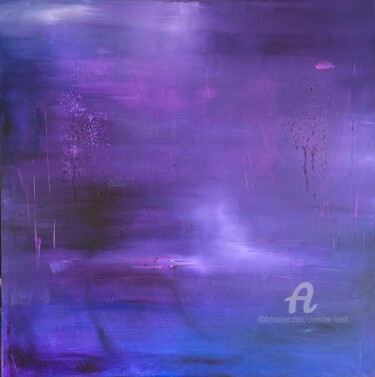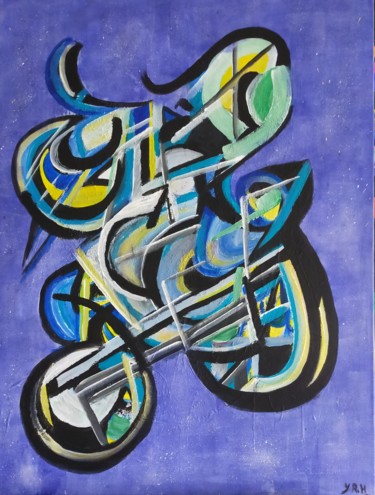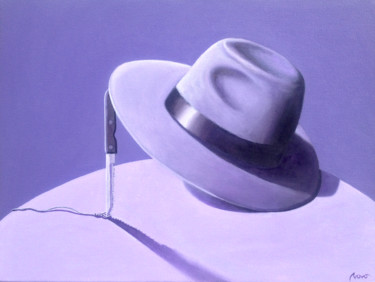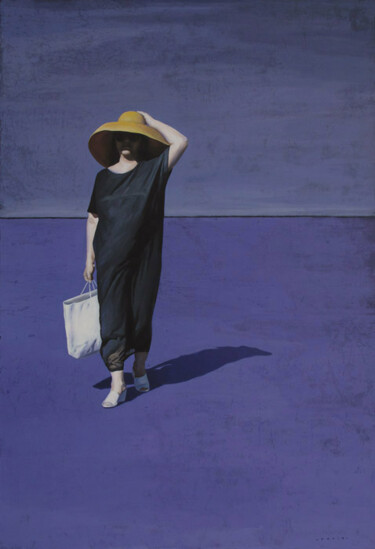Very peri
the Pantone Color Institute, has been decreeing, for over twenty-three years, the color of the year, influencing the production and purchase of goods in various sectors, including, for example, fashion, interior design, industrial design and graphic design products. To color 2022, the aforementioned US company has chosen the Very Peri shade, which has already become a trend, since it has been worn in advance, even only in its shades, by celebrities and prominent figures. This color, however, will not only influence the world of fashion, design and technology, as it will also become the symbol of the attitude with which we should face this new year. In this regard, such blue, infused with red-purple, conveys a lively, joyful and dynamic trend, which encourages expressiveness, creativity and the ability to dare within a daily routine to be rebuilt. In fact, the Very Peri has been specially selected to represent this moment of transition and difficulty, where technology and daily life are increasingly mixing, generating a new and unprecedented reality, which is marked by a strong creative impulse towards the infinite possibilities of life.
Anne Redpath, Still Life on Blue Background, circa 1945. Oil on canvas, 49.5 x 57.5 cm. London: The Fleming Collection. @alice.strang.art
Anne Redpath: Still Life on Blue Background
Many masterpieces of the history of art are characterized by shades akin to Very Peri, which have been used to generate, both stretches of color and delightful details. For example, the aforementioned nuance, which is perfect for producing light and intense shadows, has distinguished the reflections and shades of some Water lilies created by Claude Monet. Moreover, the boulders decorating Henri Edmond Cross's The Washerwoman and the tulle of Edmund Tarbell's The Blue Veil were made in a gradient very close to the aforementioned color. Among the masterpieces in which the shades of Very Peri assume, instead, a leading role, showing all their ability to merge with most styles and shades, we find Anne Redpath's Still Life on a Blue Background, dating back to about 1945. Regarding the production of the latter artist, she stood out for a style, which, halfway between French and Scottish post-impressionism, gave life to famous interiors and popular still lifes. In fact, her work, which also includes portraits and views, has undergone the strong influence of Henri Matisse, but also that of his "disciples" in the United Kingdom, such as Francis Cadell and Samuel Peploe. In addition to these masters, Redpath's art presents similarities, as regards the subjects treated, also with the work of two Scottish painters, namely Joan Eardley and Elizabeth Blackadder. The last production of Redpath, however, was marked by a new interest in religious subjects and the contemporary developments of painting technique, brought forward by avant-garde artists such as Jackson Pollock and Antoni Tàpies. Despite this, the Scottish artist never devoted himself to pure abstractionism, continuing to pursue his very personal pictorial research. As for the painting Still Life on a Blue Background, this, characterized by a large wall painted in a nuance very similar to Veri Pery's, takes up in a personal and innovative way the example of Matisse's The dessert: harmony in Red, since the decorations on the table and on the wall, surrounding the vase, seem to dialogue with each other, constituting an element of union and continuity between the different surfaces.
Ferdinand Hodler, La pointe d'Andey, vallée de l'Arv, 1909. Oil on canvas 67.5 x 90.5 cm. Paris: Musée d'Orsay. @nahtalei
Ferdinand Hodler: La pointe d'Andey, vallée de l'Arv
Another masterpiece rich in shades similar to the tonality of Very Peri is Ferdinand Hodler's La pointe d'Andey, vallée de l'Arv, where a frontal view of a mountain is depicted, which, completely realized in the shades of the above mentioned nuance, perfectly matches the white of the clouds, the blue of the sky and the ochre of the strip of land just hinted at. About the artist and his style, Hodler was the most influential Swiss painter of the late 19th and early 20th century, belonging to the Symbolism movement. Just like the aforementioned masterpiece, the artist's most popular paintings depict landscapes, which highlight the essential beauty of an idealized nature. In fact, the changes in the Swiss landscape that took place between the mid-nineteenth century and the end of the twentieth century, due to the advent of mass tourism and the effects of industrial development, are not in the least depicted. Finally, this uncontaminated subject is linked to a philosophical dimension, which, through an accurate study of the places, aims to reveal the laws of nature and the world.
 Valentina Olempyuk-Vinnikova, Still life with blue pitcher, 2019. Oil on canvas, 55 x 55 cm.
Valentina Olempyuk-Vinnikova, Still life with blue pitcher, 2019. Oil on canvas, 55 x 55 cm.
Valentina Olempyuk-Vinnikova: Still Life with Blue Pitcher
Many masterpieces of art history, such as the painting made by the artist of Artmajeur, Valentina Olempyuk-Vinnikova, have depicted still lifes with flowers, such as, for example, Still Life with Flowers, Butterfly and Other Insects by Margareta Haverman, Still Life with Peonies by Camille Jacob Pissarro, Still Life with Flowers and Fruit by Claude Monet and Sunflowers by Vincent Van Gogh. Therefore, the work of Valentina Olempyuk-Vinnikova falls perfectly within the figurative tradition of western art and is comparable, for the use of a nuance very close to Very Peri, to the Still Life on a Blue Background by Anne Redpath. In spite of this last affinity, however, the two paintings present some clear differences, because the impressionist style of the artist from Artmajeur imposes on the work more accurate research of luminous details, making shadows and light reflections emerge strongly. Moreover, the work of Valentina Olempyuk-Vinnikova, which lacks the decorative elements in the background and on the surface, turns out to be more realistic, that is, less suspended in an atmosphere between dream and reality. Finally, in the painting of the artist from Artmajeur, the space devoted to the shades of the Very Peri is reduced, since they characterize the veil, which figures only in a part of the background of the still life. In any case, the colors that accompany these shades have been chosen with great care, because the yellows of the lemons, the white of the background and the plane, and the blue of the pitcher create a delightful chromatic composition.
 Aleksandr Kryushyn, Evening. Early Spring, 2020. Oil on cardboard, 40 x 45 cm.
Aleksandr Kryushyn, Evening. Early Spring, 2020. Oil on cardboard, 40 x 45 cm.
Aleksandr Kryushyn: Evening. Early Spring
Mountains have been depicted in many iconic paintings, such as Paul Cezanne's The Mountain Sainte Victorie, Caspar David Friedrich's Wayfarer in a Sea of Fog, and William Turner's Gotthard Pass. All of these works are also able to give us an idea of the stylistic, perspective and contextual truth with which this theme has been developed over the centuries. As for the landscape created by Artmajeur's artist, Aleksandr Kryushyn, it, like Ferdinand Hodler's painting, La pointe d'Andey, vallée de l'Arv, immortalized a mountain with nuances very similar to Very Peri. Nevertheless, the two paintings are clearly different from each other, in fact, in the work of Kryushyn lacks of the frontal view of the mountain, which becomes the background of a snowy landscape with houses and trees sporadic. It is precisely this type of view, in which the atmosphere in the distance is tinged with violet and blue, that makes the work of the artist from Artmajeur an impressionist painting, like the landscapes or views created by some of the greatest masters in history of art.
 Albert Costa, Murmurillo 1 , 2021. Acrylic on paper, 90 x 68 cm.
Albert Costa, Murmurillo 1 , 2021. Acrylic on paper, 90 x 68 cm.
Albert Costa: Murmurillo 1
The painting by the artist of Artmajeur, Alberto Costa, depicts an abstract landscape, distinguished by the combination of colors that, arranged in large patches on the support, ranging from blue to purple, including shades similar to Very Peri. This abstract painting, with the intention of immortalizing a real subject, reminds us of the work of the great master Paul Klee, who believed that abstraction could never be totally separated from reality. In fact, it is possible to be abstract even with "some memory" of reality, which often provides the cues for the realization of the work itself. Therefore, Costa's painting, characterized by a strong taste for chromatism, is perfectly within the most important artistic tradition of the twentieth century.
Continue to discover other works of art realized in the tonalities of the Very Peri, by browsing our collections: Very Peri \ Abstract art & Very Peri \ Figurative.


 Olimpia Gaia Martinelli
Olimpia Gaia Martinelli























